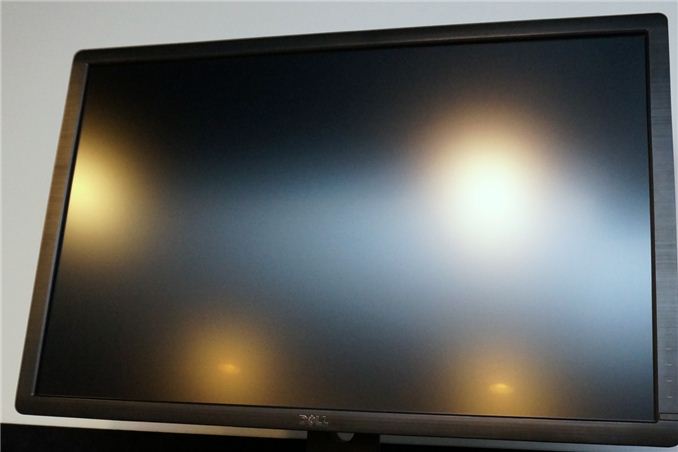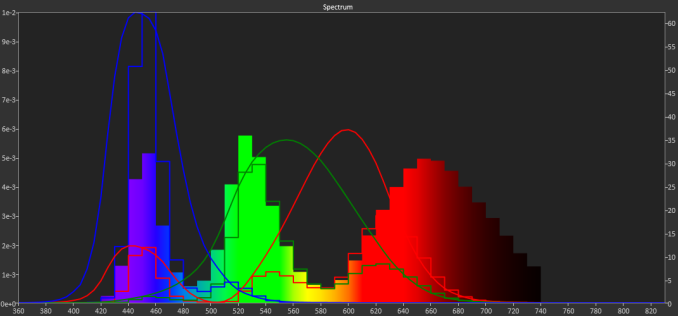Dell U3014 LCD Review
by Chris Heinonen on April 15, 2013 2:00 PM EST
In the last year, 27” 1440p displays went from being really high end in the monitor food chain to becoming close to commodity items that you buy off EBay for cheap from random vendors. It seems that there is a bit of a shift in the high-end display market, where previously resolution was dictating the upper echelon but now as we wait for 4K displays, or retina-style PPI displays on the desktop, it’s other features that are dictating what costs more.
The newest reference display from Dell is the U3014, which takes the place of the U3011. It retains the same 2560x1600 resolution of a 30” display, but adds a few more notable features including DisplayPort MST support, USB 3.0 support, uniformity correction, and most notably it's one of the first LED-backlit displays with an AdobeRGB gamut. Looking only at the specs, this looks like a monitor aiming for the NEC and Eizo users out there, but does it reach those standards?
The LED backlighting this is one of the most interesting things about the U3014. Traditional LED-backlit monitors use White LEDs, which only allow for an sRGB color gamut at maximum. Even then they often struggle to hit the full sRGB colorspace, making LED backlighting more about cabinet looks, and possibly energy use, than about performance. There have been a few exceptions like a Dell laptop and Samsung desktop LCD that used RGB LED backlighting, but typically despite the hype and marking around it LED lighting is usually not a sign of high performance in a monitor, and often it can be a sign of the opposite.
The U3014 uses a GB-LED lighting system, where you have Green and Blue LEDs and a red phosphor that is excited by those LEDs to produce a much larger spectrum of light wavelengths, which allows for a larger color gamut. This article provides some more details and even talks about Quantum Dots, which Sony is starting to use on their TVs and you might see in a computer monitor at some point as well. To give another example of the wider gamut these can produce, here are the spectral signatures recorded in CalMAN using the Dell U3014 and the Nixeus VUE 27” and its standard White LEDs.

Looking at these two charts (which are a bit confusing, I admit), we see that the level of blue output is similar from both, which we expect with LEDs. What you see on the Dell is a much higher level of green and red spectrum available, which is what allows for the larger color gamut to be used. Previously we’ve had to rely on CCFL lamps to do this larger gamut, but now with some LED tricks and a matching red phosphor, we can have LED illuminated displays that utilize a larger gamut.
Of course you also have the assumption that more colors = better, right? Well, unfortunately that isn’t the case. If you only have a larger gamut and not software that understands how to use that gamut, what you get are colors that are further outside of the gamut than they should be. Greens are too green, reds are too red, and everything looks like a badly calibrated OLED smartphone. Anyone buying something like the U3014 is going to need to have accurate colors in any colorspace, and the Dell offers an sRGB mode as well.
In addition to the preset sRGB and AdobeRGB modes, Dell offers two custom CAL1 and CAL2 modes that their calibration software can set to any gamut and white point you want. I will look at this in a moment and cover its performance.










84 Comments
View All Comments
twotwotwo - Monday, April 15, 2013 - link
Wow, kind of surprised at monitors with 30+ millisecond lag times. I know it's not *that* long. But it is longer than my ping time to Google, and it's hand to monitor, not over a wide-area network. :)cheinonen - Monday, April 15, 2013 - link
I really think this is more of a factor of target markets. Games don't use AdobeRGB gamuts, or really need uniformity correctly like photo and graphics work do. If the processing for those features adds a bit of gaming lag I don't think Dell would consider that a big downside, since that isn't the target market anyway. As I said in the review, I'm only so certain on those lag numbers, as other people found much better ones, but methods for measuring lag on a 30" display are a little lacking right now.Kurge - Monday, April 15, 2013 - link
It has excellent lag times, well above average. It has a game mode which apparently they didn't test?cheinonen - Monday, April 15, 2013 - link
The lag times are using the game mode. I'll update the text later to reflect this fact.Sabresiberian - Monday, April 15, 2013 - link
Tftcentral reports a significantly lower lag time in gaming mode:http://www.tftcentral.co.uk/reviews/dell_u3014.htm
They are using a different method than they did a few months ago, and all the numbers are lower than what they used to report. They claim it is more accurate.
AnnonymousCoward - Tuesday, April 16, 2013 - link
cheinonen, lag sucks for normal use, not just gaming! Most people are slower mouse users than myself; I demand responsiveness. I also don't want audio/video out of sync.Martin_Schou - Monday, April 15, 2013 - link
To be fair, a ping is typically only 32 bytes. A 2560x1600 monitor has 4 million pixels, each of which needs at least 32 bits of data.JlHADJOE - Monday, April 15, 2013 - link
To be fair, the distance to your monitor is typically only 3 feet. A ping to google's servers is probably several hundred miles, each hop of which needs to go through routing equipment which adds its own latency.Sabresiberian - Monday, April 15, 2013 - link
Number of pixels doesn't seem to be the cause of greater lag, added OSD and connection types make a big difference.asdftech - Friday, April 19, 2013 - link
Throughput and latency are different things.